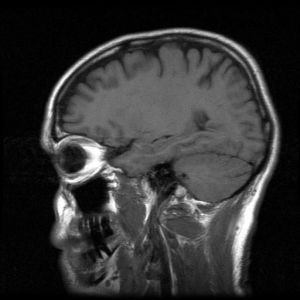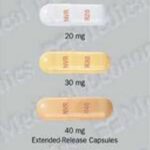Methylphenidate is a popular drug used in the treatment of Attention Deficit Disorder and Attention Deficit Hyperactivity Disorder (ADD/ADHD). It is a stimulant and comes in several forms, two of which are single dose and timed-release. They are prescribed under many brand names. Two of them are Ritalin and Concerta. Ritalin is taken multiple times per day, Concerta once a day, the presumption being that the patient doesn’t have to remember to take a pill every few hours.
No drug is right for everyone. For children in a school setting, this may be good as the child is focused on the teacher and the teacher leads the student from one focal point to another. For someone like me, who is responsible for shifting focus themselves, Concerta isn’t good. I have ADD and have used both drugs.
Ritalin’s half life (the time it is effective) is about four hours. The drug enters the system, reaches a peak, maybe an hour after entering the system, then its effectiveness reduces until it is no longer in the system. The patient needs to take it again. Children can be cruel, especially when a child must go to the nurse’s office to take a pill. It sets them apart, which is not always a good thing.
Concerta’s half life is about eight to ten hours. It is a timed-release medication that continually releases into the system throughout the day. A child can take this before school and no one would be the wiser.
In my case, while I often forget to take my Ritalin, usually at midday, I prefer the ups and downs of it. It seems an odd statement, but there you have it. It allows me to “shift gears,” for lack of a better term, or move from task to task. When I took Concerta, I couldn’t do that. I got focused on something, and I stayed focused. “Shifting gears” was virtually impossible. Now, some ADDers may like that eternally-focused feeling. I did not. But, then, if I am reading all day or attending an all-day meeting, Concerta would come in really handy because I would only need to be focused on the one thing, and I wouldn’t have to remember to take my Ritalin.
Oftentimes children do not want to take their medication or are unable to take their medication. For this reason, Daytrana was developed. Daytrana is the brand name for a transdermal patch, which works much like the nicotine replacement therapy Nicoderm. The Food and Drug Administration has determined it to be as effective as Concerta with a wear-time of nine hours, although the formula is slightly different (Ritalin and Concerta have the same formula). I’ll have to talk to my doctor about this. Aside from the ease of use, it was determined that the possibility of abuse is minimal, which has been a real concern with the pills, not by the ADDer, but from those who do not suffer from ADD. It is time-consuming and expensive to extract the active ingredient whereas with Ritalin the pill is taken orally or crushed and snorted. Because there are still arguments that methylphenidate is addictive, all forms of methylphenidate are considered Class II, which means it is a controlled drug.
My current personal preference notwithstanding, the timed-released version of methylphenidate seems the more efficient way to administer the drug, since one of the symptoms of ADD is forgetfulness. Take it once in the morning, and you’re done for the day. The transdermal patch seems even better, although I have yet to use it. If my doctor agrees and prescribes it, I will report back soon.
Food and Drug Administration. FDA Psychopharmacologic Drugs Advisor Committee Briefing Document: Methylphenidate Transdermal System. October 24, 2005. Retrieved from www.fda.gov on May 15, 2007.
National Institute on Drug Abuse, National Institute on Health. NIDA InfoFacts: Methylphenidate (Ritalin). August 18, 2006. Retrieved on http://www.nida.nih.gov/Infofacts/Ritalin.html on May 14, 2007.




